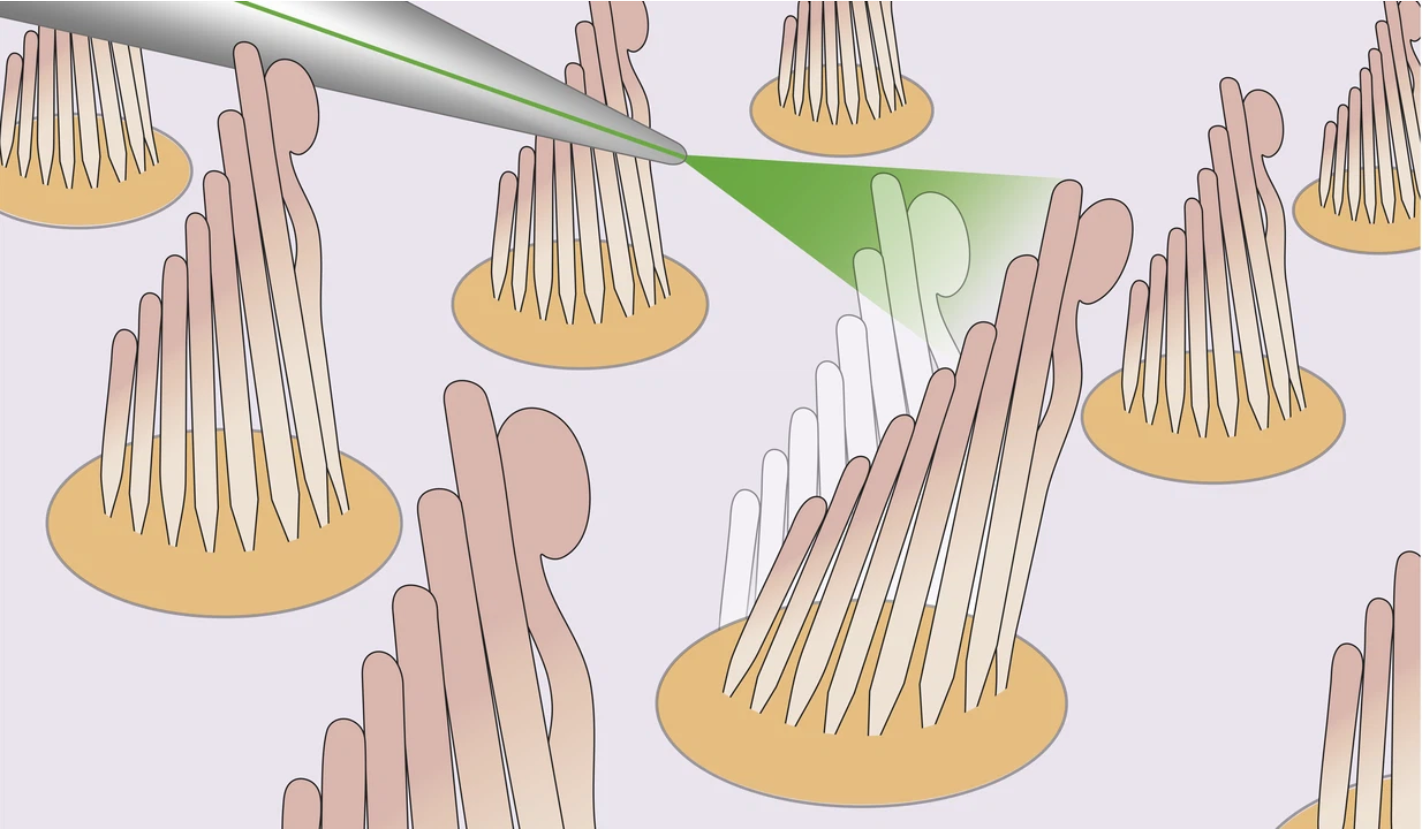Using Light to Study Sound

The sense of hearing relies on specialized sensory cells in the inner ear. Each of these hair cells converts sounds into electrical signals that the brain can interpret. The hair cell takes its name from the bundle of rod-like structures that protrude from its top surface, which resemble hairs under the microscope. The hair bundle acts as an antenna that bends in response to sound waves. When a hair bundle moves in a particular direction, it opens ion channels in the hair-cell membrane. The resulting flow of ions into the cell triggers a cascade of events that ends with an electrical signal traveling to the brain.
The problem to solve was that the techniques available to study hair cells, either a piezo-driven glass probe or a fluid jet, are hindered by viscous drag and hence too slow to investigate the physiological timescales of mammalian hearing. The idea was to use photonic pressure to circumvent this issue.
As we press a letter on a keyboard, the ripple of pressure that spreads through the air peaks at about 20 µPa, a tenth of a billionth of atmospheric pressure—and yet, we hear it. It is not surprising then that the photonic pressure generated by a laser beam could be enough to move the sensitive hair bundles of the ear. I collaborated with an optical engineer to develop, test and validate this technique and designed a protocol to deliver the stimulus precisely onto mammalian hair bundles. Read the paper.